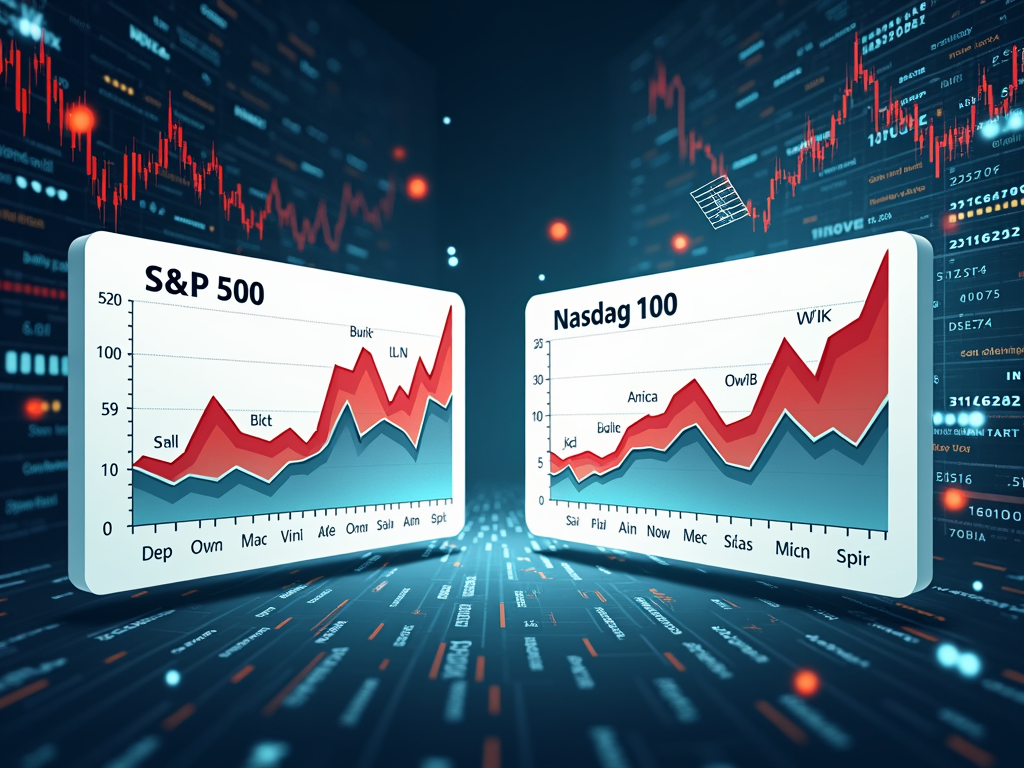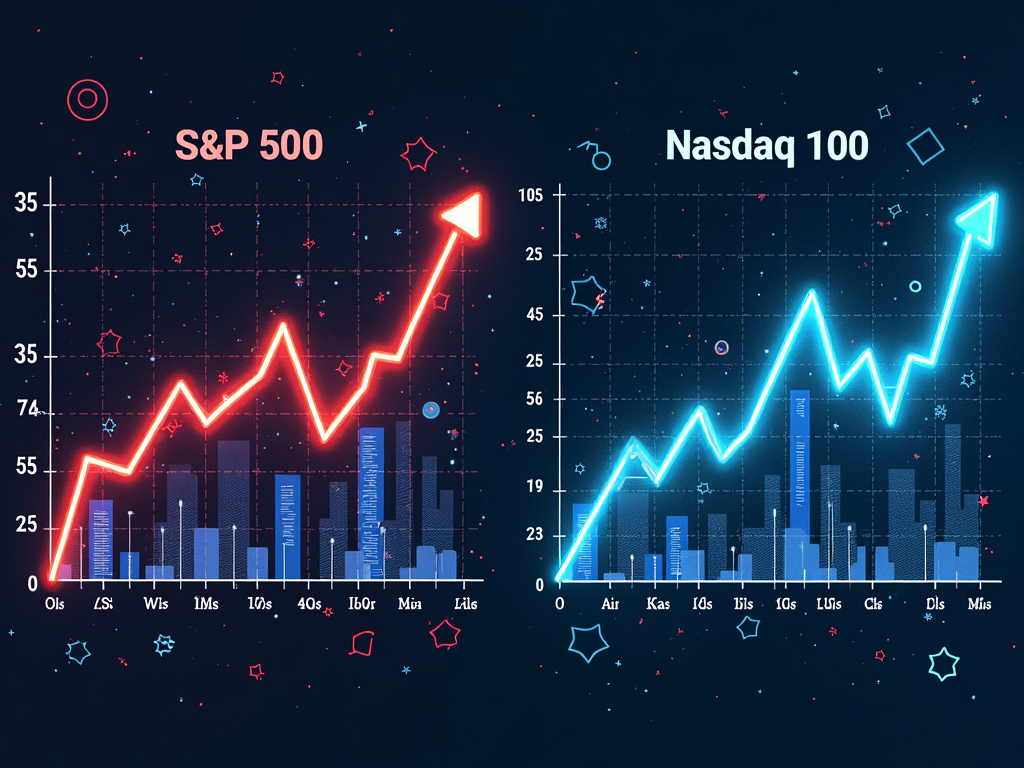The technology sector is the beating heart of the modern economy, and its performance in indices such as the S&P 500 and the Nasdaq 100 offers valuable insights for investors. While the S&P 500 provides broader market coverage, the Nasdaq 100 is more focused on technology. These differences influence not only the volatility and returns but also the investment strategies of investors. Below, we will analyze the market coverage and weight in the technology sector, as well as the volatility and investment strategies of these two indices.
Different Emphases: The Role of the Technology Sector in the S&P 500 and Nasdaq 100

In the exciting world of financial markets, the S&P 500 and the Nasdaq 100 represent two fundamental indices that provide information on the performance and weight of the technology sector. Both offer investors unique perspectives, with the focus and weight of these indices in the technology sector revealing critical differences.
The S&P 500, a giant among indices, includes 500 of the largest publicly traded companies in the United States. This index allows for comprehensive market coverage, encompassing a variety of sectors from technology to healthcare to consumer goods. Despite this breadth, the technology sector has a significant impact, accounting for about a third of the index. This broad sector distribution provides some stability and less volatility; however, the strong presence of tech giants such as Apple and Microsoft should not be underestimated.
In contrast, the Nasdaq 100 focuses almost exclusively on tech companies. It explicitly excludes financial companies, allowing for a targeted weighting. This specialization leads to a high concentration on a few tech companies, with top positions often representing over 25-40% of the index. This focus can be both an opportunity and a curse, as it offers great potential but also entails risks, especially during periods when large tech companies go through turbulent phases.
A direct performance comparison shows that the Nasdaq 100 has often recorded higher returns in recent years due to its dominance by tech companies. However, this concentration on technology inevitably leads to increased volatility. The S&P 500, on the other hand, benefits from its diversification, offering a more stable base, even if it often results in more moderate returns.
Diversification and risk management play a significant role in the choice between these two indices. Investors seeking a well-diversified portfolio may prefer the more balanced approach of the S&P 500. Conversely, those who want to benefit from the dynamics of the technology sector may seize opportunities in the Nasdaq 100. Therefore, the S&P 500 offers stability through diversification, while the Nasdaq 100 is concentrated on leading tech companies, potentially promising higher returns but also risks.
Volatile Markets: Investment Opportunities and Challenges in the Technology Sector

In the fast-paced era of stock indices, the S&P 500 and Nasdaq 100 not only serve different roles but also offer specific strategies and challenges for investors. The technology sector is at the forefront, demonstrating how crucial the structure and weight of the respective indices are.
In the S&P 500, an index that reflects the breadth of the US market, there is a notable weight favoring the technology sector, which represents about 45%. This concentration gives the index some volatility, especially in times of economic uncertainty and geopolitical tensions. Investors choosing the S&P 500 expect diversification across various sectors, where tech companies are closely monitored for their stable cash flows and growth potential. Firms like NVIDIA and Microsoft are in the spotlight not only for their market strength but also for their focus on future technologies like AI and cloud computing.
Conversely, the Nasdaq 100 deviates from this broader approach, focusing more on technology companies and those driven by innovation. Particular attention is given to dominant market names such as Apple, Amazon, and Alphabet, which characterize the index. This greater focus makes the Nasdaq 100 more volatile, as it relies more heavily on the performance of a smaller number of tech heavyweights. However, this index attracts investors seeking above-average returns and high growth potential. This group of investors is willing to take on greater risk to leverage the innovative power in AI technology and e-commerce.
The different weightings and the associated risk profile of the indices highlight that investors must align their strategies with their risk tolerance and investment goals. While the S&P 500 may offer stability through diversification, the Nasdaq 100 entices with the promise of significant growth opportunities in a rapidly evolving technology sector. The choice between the two indices thus heavily depends on investors’ willingness to accept greater volatility for potentially higher gains.